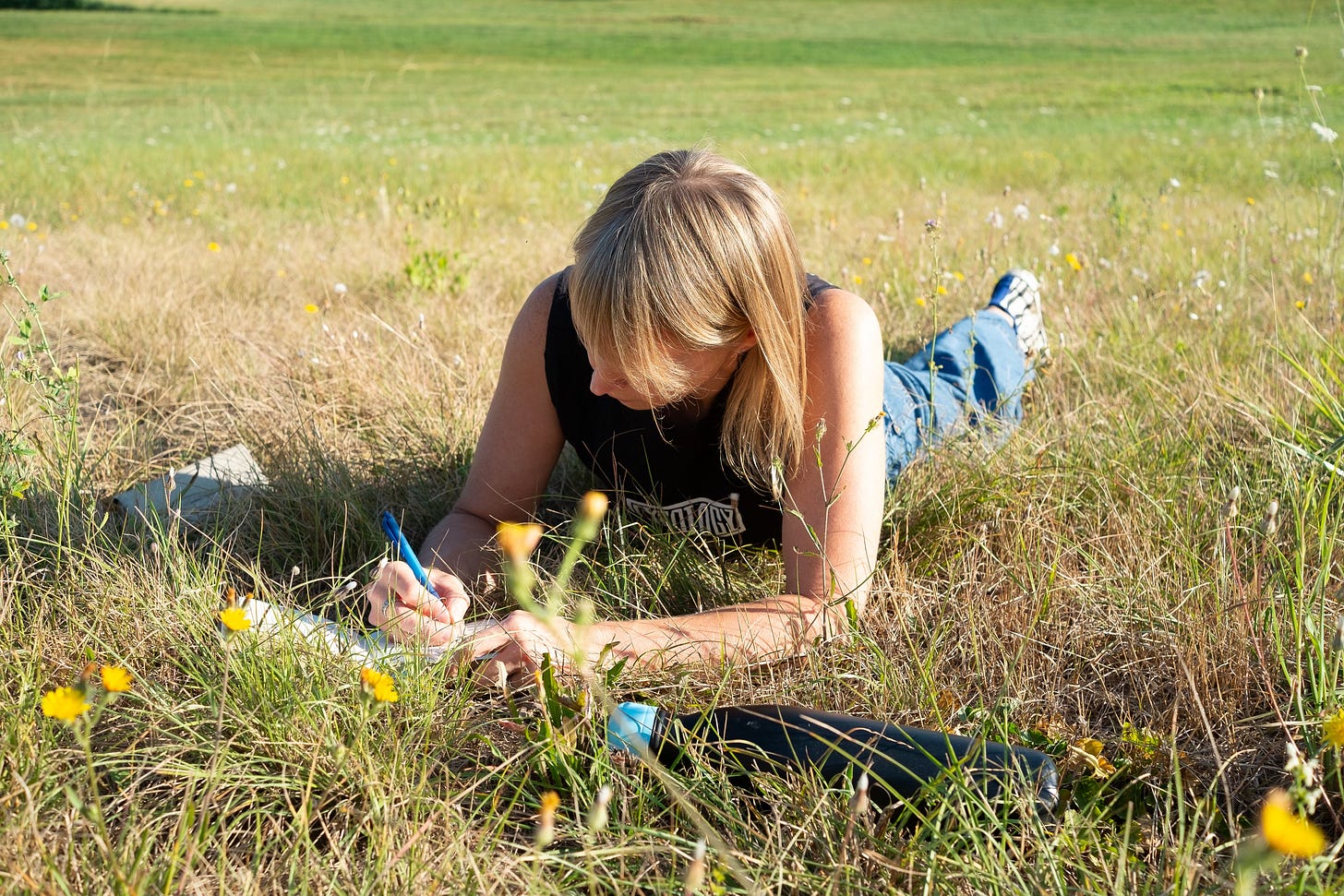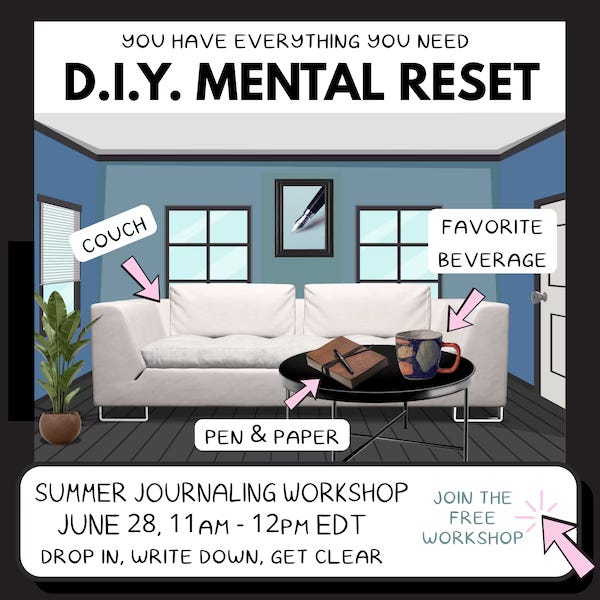"What's So?" How to Use Your Journal to Coach Yourself
transformative practices from ICF-trained coach and generalist Anna Larras
“When I open my journal, it’s the end of the world. When I close it, I know what I need to do.”
-Anna Larras
Sometimes journaling sneaks up on you. Anna Larras was working in a demanding advisory role in New Zealand when she unexpectedly found herself “scribbling her deepest emotions” onto a sheet of paper.
“I had a great life, great job, very successful by society’s standards … but I felt like my life completely lacked meaning,” she says. “There was a pivotal moment where I had to fly every week between Auckland and Wellington. I was in a hotel, in a restaurant, on my own, and suddenly I was writing, ‘I can't live like this. It has to change.’”
That unplanned writing episode brought instantaneous clarity.
“The act of physically writing down everything that was going on and getting all my feelings out on paper made me see what was staring me in the face,” she says. “I realized I had to hand in my notice.”
Anna left the corporate grind in favor of a more intentional life in rural France, where she now offers remote coaching and business support.
Journaling has become one of her most trusted tools: “It has transformed my life,” she says. “I am way more in touch with my authentic self.”
Here, she shares her best practices for using journaling to support personal and professional growth.
“What’s So?”
Drawn from a question her own coach used, Anna often begins journaling sessions by asking herself, “What’s so?” This neutral framing allows her to pause judgement and take a snapshot of her internal and external experience.
“The ‘what’s so’ question is an invitation to look at my situation and get clear on how I am feeling about it,” she says. “What’s going on? What would I like to change?”
Asking this question in the privacy of her journal allows her to “get real,” she says.
“I love to start with that question, especially when I feel stuck. The answers just flow out of me in response to those two words.”
Don’t Force It
Rather than demanding journaling consistency of herself, Anna creates a daily invitation that she is welcome to refuse.
“I’m definitely not an every-dayer,” she says. “But I do have a daily cue. Each morning I roll out my mat and do my yoga, and afterward I’m sitting cross-legged and my journal is right there. So, often, as part of that personal self-care practice I will pick it up. But sometimes I don’t feel like I need to.”
Equally, should she run into an emotion she needs to process later in the day, Anna keeps her journal at the ready.
“I can always find fresh perspective through journaling,” she says. “I can always find a way forward.” By the time she’s done writing, “I feel 10 times better, like the weight has been lifted.”
Evening Download
In addition to using her journal to work through challenging feelings and situations, Anna also visits it to capture ideas and inspiration. These flashes tend to appear in the evening as she is winding down.
“In the half hour in which I’m lying in bed and everything’s quiet, the bedside lamp is on and I might have a cat with me, I can have some pretty good ideas,” she says. “That period of time can feel like my best access to what my intuition is telling me.”
Look for Patterns
Writing also opens an opportunity that thinking alone cannot: reviewing the record.
“Every now and then, I’ll look back over a few months of journal entries, and — my God, it’s crazy — the patterns become so much more obvious,” Anna observes. “When you’re in a situation, you’re focused on that situation. But when you stand back and review multiple entries at once, it’s just mind blowing how you get these key messages.”
She offers the example of reading back through her journal and noticing that she was habitually self-sabotaging. In response, she wrote herself a love letter with the insights that came through.
An excerpt:
Fake it ’til you make it — BELIEVE in yourself. What’s the worst that could happen? You fail and figure out another way — at least you tried. What’s the best that could happen? You realise your dreams. YOU REALISE YOUR DREAMS!’
“Now it’s something that I can pick up and read every day as a reminder,” she says.
A Beautiful Journal
As simple as it may seem, selecting a journal that appeals to you can be a major catalyst for committing to the practice.
“What actually did it for me, being a stationery freak, is finding a stunning notebook,” Anna says of the deciding factor in making journaling a habit. “Until then, my journaling was disjointed. It didn’t feel quite right. But when I found a notebook that feels precious, even feels magical, then I was away.” 🖊️
Resources and Opportunities for Journalers
🔗 Connect with Anna through her website: https://annalarras.com
📖 Elisabeth’s guidelines for finding a journal you love: https://elisabethandrews.com/journal-selection-guide
🗞️ Do you have a journaling practice? Want to be featured in the Navel Gazette?
Reach out by email: elisabeth.andrews@gmail.com.
More in the “How I Journal” series:
Meet other journalers and start your summer practice
Join the free workshop on June 28 for a sweet, calm reset to the second half of the year. We'll explore three seasonal journaling prompts, connect on what it's like to write for your eyes only, and make space for a new and brighter vision to emerge.
This is for you if:
✔️ You feel like the world is moving a million miles an hour and you need a way to reclaim mental space
✔️ You have a sense that journaling would support you, but can't seem to get started
✔️ You're a journaler curious about how others approach and benefit from this transformative practice
Saturday, June 28 at 11am EDT | Via Zoom | FREE to attend | REGISTER HERE






